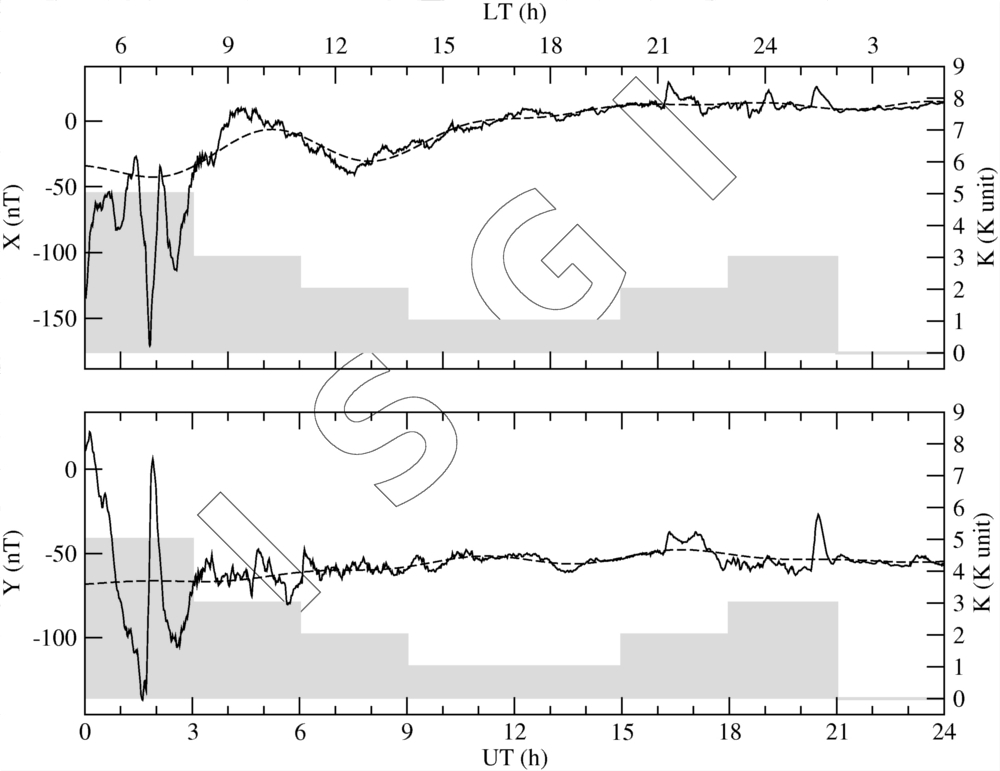Definition: An individual K index is an integer in the range 0 to 9 corresponding to a
class that contains, after eliminating the regular daily variation (SR),
the largest range of geomagnetic disturbances (aX and aY) in the
two horizontal components (X and Y) during a 3-hour UT interval.
The limits of these classes at a particular observatory are defined with the intent of producing
a geomagnetic disturbance characterisation that does not depend significantly on the location of a sub-auroral,
mid- or low- latitude observatory.
Limits of class: The limits of classes at a particular observatory are defined with the intent of producing
a geomagnetic disturbance characterisation that does not depend significantly on the location of a sub-auroral, mid- or low- latitude
observatory.
The limits may vary from one observatory to another
since they depend on the corrected geomagnetic latitude.
ISGI-headquarters are in charge of the computation of L9 value for each magnetic observatory.
Computation of K indices:
The original definition of K indices (Bartels et al., 1939) requires hand scaling on analogue magnetograms. The
question of the derivation of geomagnetic indices from digital data arose at the end of the seventies.
|
Different algorithms enabling computer derivation of K indices
were then developed and carefully assessed in the frame of an
international comparison organised by the IAGA Working Group “Geomagnetic indices” (Coles & Menvielle, 1991;
Menvielle, 1991; Menvielle et al., 1995). Basically, these algorithms estimate the SR variation from the magnetograms. The geomagnetic disturbances, from which the K indices are computed, are derived as the difference between the observed variations and the computer estimated SR ones. Example: SR and K determination by the FMI algorithm (Sucksdorff et al., 1991) for a moderately disturbed day (2010, April 12th; Am = 30 nT) at the PAF observatory. |

|